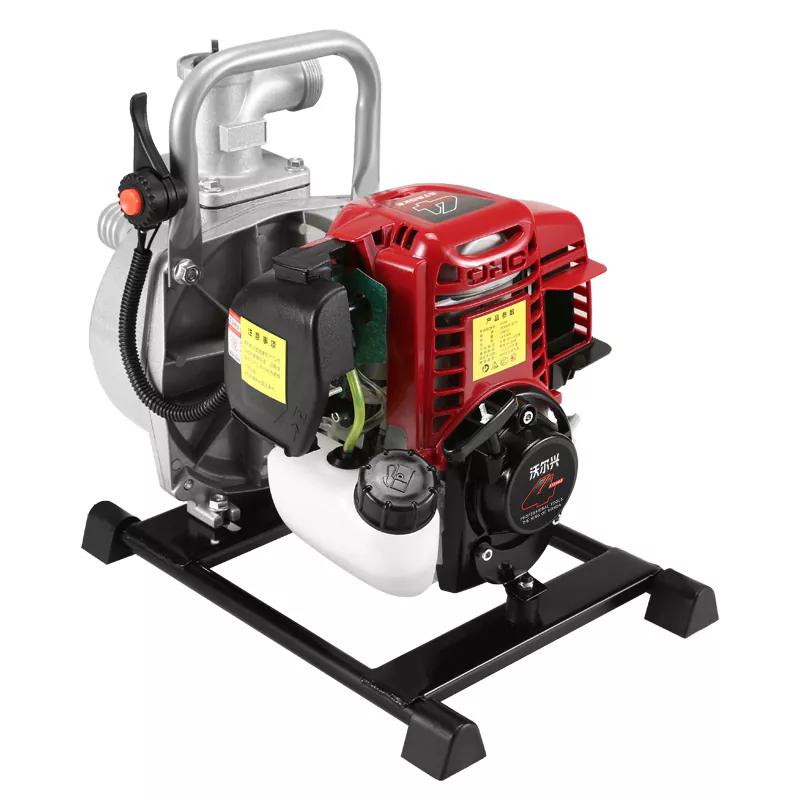The core function of the Self-Priming Pump: Efficient fluid transfer without pre-priming.
2025-07-29
As a specialized fluid transfer device, the Self-Priming Pump's core advantage lies in its ability to automatically draw in liquid without pre-priming the pump casing. Its self-priming capability and stable delivery performance eliminate the inconvenience of traditional centrifugal pumps requiring manual priming before startup in industrial, agricultural, and civilian applications. Its key advantages are convenience and adaptability.
The Core Mechanism of the Self-Priming Principle
The self-priming capability of a self-priming pump stems from its unique structural design and operating principle. A liquid reservoir is located within the pump body. During initial startup, a small amount of liquid within the reservoir is ejected by the centrifugal force generated by the rotating impeller, creating a vacuum. The external atmospheric pressure then forces liquid into the pump, filling the vacuum and completing the initial intake. Once liquid enters the impeller, it is again ejected by the high-speed impeller and discharged through the pump casing, simultaneously creating a vacuum within the reservoir and continuously drawing in new liquid. This cyclical process allows the pump to retain some liquid even after shutdown, allowing it to directly enter the intake and discharge phase without refilling upon restart.
Adaptability in Fluid Transport
Self-priming pumps demonstrate strong adaptability in transporting fluids of varying properties. They can stably transport clean water, sewage, and liquids containing small amounts of impurities. The clearance between the impeller and the pump casing reduces the risk of impurity entrapment. Furthermore, they can accommodate a range of suction lifts. Even if the liquid storage location is lower than the pump's installation height, they can still efficiently draw and transport the liquid within a reasonable suction lift, eliminating the need for a separate water priming pump and simplifying the conveying system structure.
Practical Value in Application Scenarios
In practical applications, the practical value of self-priming pumps lies in simplifying operational processes and improving work efficiency. In agricultural irrigation, they can draw water directly from sources such as rivers, canals, and ponds, eliminating the need for manual filling, making them particularly suitable for field operations. In industrial drainage, they can quickly treat low-lying areas with accumulated water or wastewater containing small amounts of particles, offering convenient startup and relatively simple maintenance. In residential applications, such as household well water supply and small swimming pool water changes, their ease of use lowers the barrier to entry, allowing for easy startup and operation without the need for specialized personnel. Key points of performance optimization.
High-quality self-priming pumps focus on improving self-priming speed and operating stability in performance optimization. By improving the shape of the impeller, the centrifugal force and vacuum degree of the liquid are enhanced, and the self-priming time is shortened; the impeller and pump casing are made of wear-resistant and corrosion-resistant materials to extend the service life when conveying impurities or corrosive liquids; at the same time, the sealing structure of the pump body is reasonably designed to reduce liquid leakage, ensure the vacuum degree during the self-priming process, and maintain a stable delivery pressure.
Yongkang Yueli Industry and Trade Company focuses on the research and development and manufacturing of such products. The company focuses on the optimization of the pump body structure and the selection of materials. The self-priming pumps it produces have balanced performance in self-priming ability, delivery efficiency and durability. They can adapt to a variety of fluid delivery scenarios and provide users in different fields with convenient and reliable fluid delivery solutions to meet the diverse needs in practical applications.

























